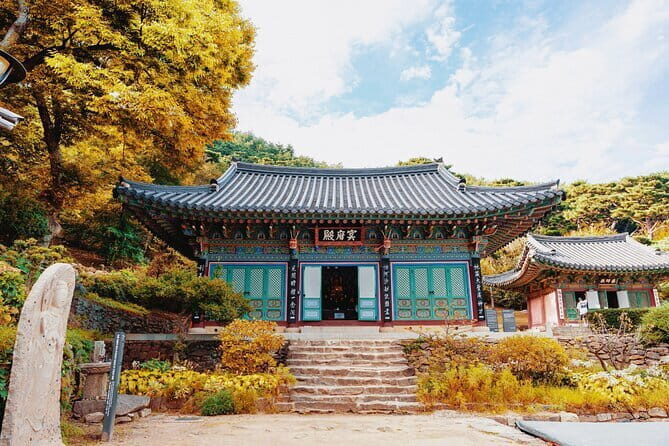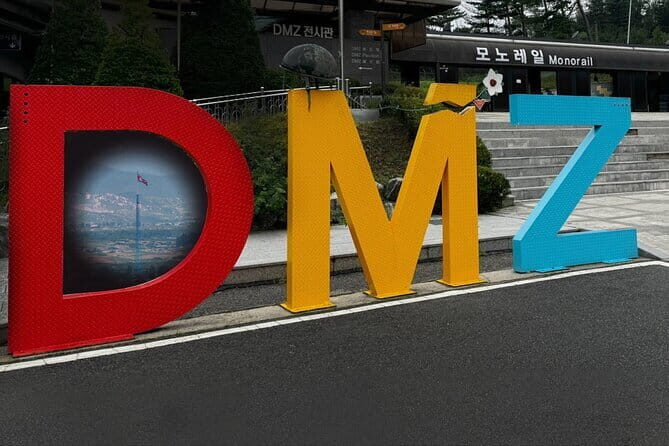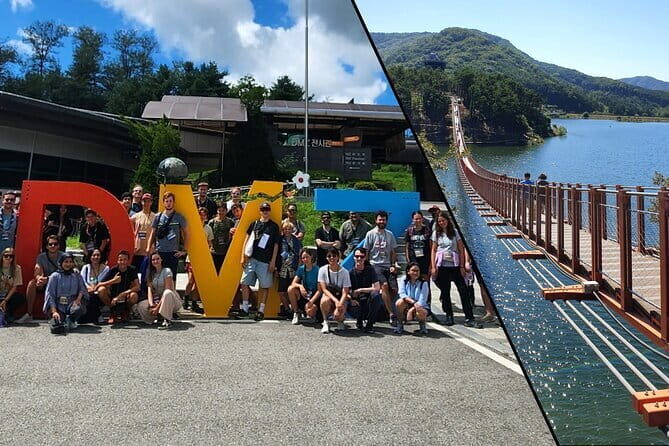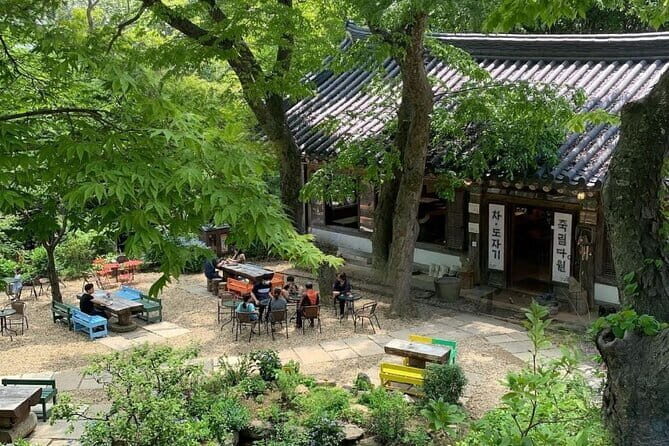Physical Address
304 North Cardinal St.
Dorchester Center, MA 02124
Physical Address
304 North Cardinal St.
Dorchester Center, MA 02124

Discover Seoul’s history and culture on this 9-hour Ganghwa DMZ and traditional market tour, combining stunning views, authentic food, and compelling sites.
Exploring Seoul’s Hidden Layers with the Ganghwa DMZ + Traditional Market Tour
If you’re seeking an authentic day out that combines history, culture, and local flavor, this Seoul: Ganghwa DMZ + Traditional Market Tour offers an intriguing mix. For just over $40, you’ll spend about nine hours exploring some of Korea’s most significant sites, including breathtaking views of North Korea, ancient temples, and a retro market brimming with fresh produce and traditional snacks. The highlight? Visiting the Ganghwa Peace Observatory to get a rare glimpse into the Korean Peninsula’s ongoing story, all while enjoying the comfort of round-trip transportation and a professional guide.
What we particularly love about this tour is how it balances the political weight of the DMZ with the warmth of local markets and historic temples. It’s a chance to see Korea’s complex history and vibrant everyday life all in one day. However, keep in mind that the itinerary is quite packed, so a good pair of walking shoes and a curious mind are essentials. This experience works best for travelers interested in history, culture, and authentic local experiences rather than those looking for a leisurely, slow-paced day.


You might also be interested in these Seoul experiences
The tour begins early, with pick-up points conveniently located at Dongdaemun History & Culture Park station Exit 10, Myeongdong Station Exit 3, and Hongik University Station Exit 4. Starting at around 7:00 AM, this timing ensures you arrive at your first destination with enough daylight and avoids midday crowds at the attractions. The transportation is included, so there’s no need to worry about navigating Seoul’s busy streets or parking.
Your first major experience is the Ganghwa Peace Observatory—a four-story building with panoramic viewing decks. Entry is included, and visitors can access floors that reveal a stark comparison between North and South Korea through videos, photographs, and informative exhibits. The second floor’s video room compares military forces, giving context to the ongoing division. The third floor offers stunning views of North Korean mountains and housing—a rare sight that makes you realize the proximity and tension of the border.
From reviews, travelers have found the observatory “fascinating,” appreciating the balance of visual displays and scenic views. One visitor mentioned, “It’s the kind of place that makes you think about the bigger picture of Korea’s history.” The building itself is modern, but the real draw is the vantage point into North Korea, which is both sobering and awe-inspiring.
Next, you’ll visit the Daeryong Market, a local favorite that feels like stepping back into the 1970s and 80s. It’s a somewhat exclusive destination, accessible only with permission from Korean military authorities—adding a layer of uniqueness and security. Here, you can browse shops offering fresh seafood, fruits, traditional snacks, and household goods.
This market is noted for its retro vibe—think old-fashioned stalls, nostalgic signage, and a lively atmosphere. According to reviews, visitors love sampling local foods and shopping for souvenirs that reflect true Korean craftsmanship. Although lunch expenses are not included, many travelers find that the market offers excellent options for a quick, authentic meal, enhancing the overall cultural feel of the day.
The third stop is Jeondeungsa Temple, one of Korea’s oldest, dating back to the 4th century during Goguryeo. Its architecture is intricate, with Daeungbojeon Hall showcasing detailed wooden carvings and traditional paintings. The temple’s peaceful ambiance offers a stark contrast to the political weight of the DMZ, providing a moment of reflection amidst historical exploration.
Visitors often describe Jeondeungsa as “beautifully preserved,” with some appreciating the chance to experience traditional Korean tea culture at Jukrim Dawon, located within the temple grounds. The setting is calming, and many find it a worthwhile stop to connect with Korea’s spiritual heritage.
Shoppers can discover Seoul's markets and boutiques through these guided experiences
After soaking in the serenity of Jeondeungsa, the tour concludes with a return to Seoul, dropping participants off at their starting points—Dongdaemun, Myeongdong, or Hongik University stations. This final leg is about an hour, giving some downtime to process the day’s experiences or grab a snack before heading back home.

Transportation is included throughout, which is a huge advantage considering the distance between Seoul and Ganghwa Island. The group size caps at 40, making the experience intimate enough to ask questions but lively enough for a shared adventure. The total cost of just over $40 includes all entrance fees, which is reasonable given the variety and depth of sites visited.
While the price does not include lunch, the stops at Daeryong Market allow you to explore local foods at your own pace, often costing just a few dollars for a taste of Korea’s traditional cuisine. This flexibility adds to the overall value, making it suitable for budget-conscious travelers eager to see authentic Korea beyond Seoul’s city center.
From reviews, travelers appreciate the depth of knowledge provided by guides, who often share personal insights and lesser-known facts. One reviewer noted, “Our guide, Mr. Kim, was very knowledgeable, explaining the significance of each site in ways that made history feel alive.” Guides tend to be friendly and professional, creating a welcoming environment.
The views from the Peace Observatory are often described as “breathtaking,” with some travelers mentioning how the visibility allows you to see North Korean mountains clearly. This makes the visit both educational and visually stunning—a rare combination.
If you’re a curious traveler eager to understand Korea’s division and history, this tour offers a perfect blend of educational content and culture. It’s especially suitable for those interested in geopolitics, history buffs, and fans of traditional markets. The inclusion of scenic views and peaceful temples also appeals to those seeking moments of reflection amidst their sightseeing.
However, if you prefer a slow-paced, museum-like experience, this tour might feel a bit rushed. The packed itinerary requires a good level of physical stamina, as there’s significant walking and standing involved. It’s also a good choice for travelers on a budget, given the comprehensive nature of the experience at an affordable price.

This tour offers a fascinating glimpse into Korea’s complicated history and vibrant culture. You’ll appreciate the stunning views of North Korea from the observatory, the nostalgic feel of Daeryong Market, and the serenity of Jeondeungsa Temple. It’s a well-rounded experience that balances political significance with genuine cultural moments.
For those who want a meaningful, affordable day trip that goes beyond Seoul’s typical attractions, this tour hits the mark. It’s ideal for travelers who enjoy learning on the go, experiencing local flavors, and seeing history unfold in real-time.
The combination of authentic sites, scenic vistas, and lively markets makes this tour both educational and fun. Just be prepared for a full day, and bring your curiosity—and maybe some walking shoes.

Is transportation included in this tour? Yes, round-trip transportation from specified pickup points in Seoul is included, making travel between Seoul and Ganghwa Island seamless.
What is the duration of the tour? The entire experience lasts approximately 9 hours, from early morning pickup to returning to Seoul in the early evening.
How much walking is involved? Expect a fair amount of walking and standing, especially at the Peace Observatory, the temple, and the market. Comfortable shoes are recommended.
Are entrance fees included? Yes, all entrance fees for the Peace Observatory, temple, and other attractions are included in the tour price.
Can I customize the lunch? Lunch expenses are not included, and while the tour doesn’t specify a set meal, visitors often eat at Daeryong Market, where a variety of traditional Korean foods are available.
Is this tour suitable for children? Generally, yes, but keep in mind the early start and the amount of walking involved.
What is the group size limit? The maximum number of travelers is 40, which helps keep the experience manageable and guides attentive.
Will I see North Korea? You won’t see North Korea directly, but the Peace Observatory provides panoramic views and informative displays that give insight into the border region.
What should I bring? Bring comfortable shoes, a camera, some cash for souvenirs or snacks, and perhaps a light jacket, depending on the weather.
How do I book this tour? It’s best to book in advance — most travelers book about 53 days ahead on platforms like Viator, especially during peak seasons.
This tour is a fantastic way to connect with Korea’s past and present, offering a balanced dose of history, culture, and scenic beauty. Whether you’re a history buff or just curious about Korea’s divided land, it promises a day full of insights, stunning sights, and local flavor.